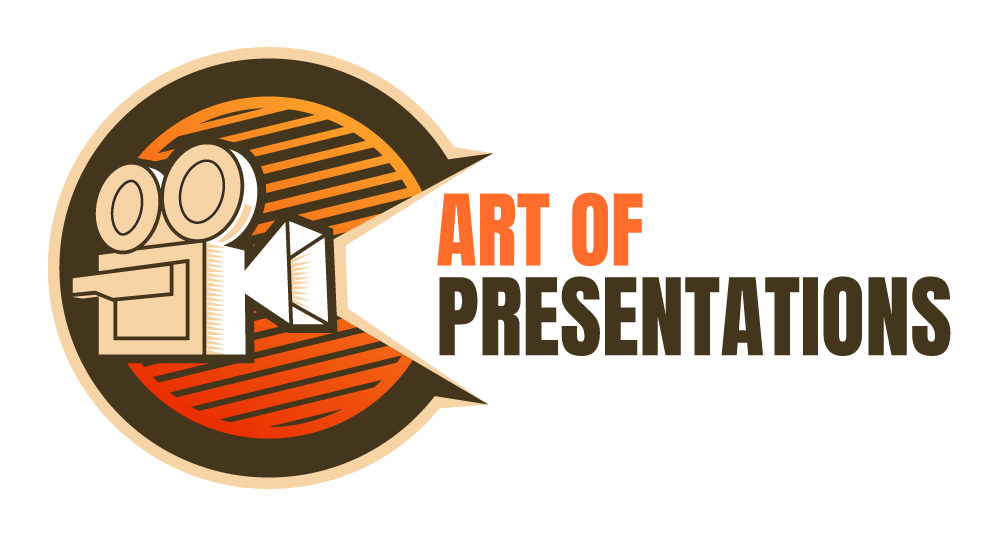Have you ever felt nervous about giving a presentation? Then, you are not alone. Many people experience anxiety before or during presentations, and it can be difficult to overcome the nerves. Some people get those feelings every once in a while, and for a few others, it is a regular occurrence.
If this sounds like you, then read on to understand why presentations can make people nervous and get some helpful tips to overcome your nerves!
Why Do Presentations Make People Nervous?

In today’s work culture, people are expected to give a presentation every now and then. It is quite a common practice even for students, but more so when you join an office.
But a seemingly simple task of giving a presentation usually makes people quite nervous!
It is interesting to note that nerves can be a natural reaction to feeling the pressure of speaking in front of people. This is because we are often trying to make an impression on others, and that can cause stress.
There are many reasons why presentations might make you nervous:
- You worry about making mistakes or saying something embarrassing.
- You worry that you won’t have time to cover everything.
- You worry about how people will react, or if they’ll think what you’re saying is interesting and engaging enough.
- You might be nervous because this would not be the first speech of its kind in front of a group of people – it just feels like an extension of the other presentations you’ve given.
It doesn’t really matter what makes you nervous when giving a presentation, what is important is what you do to overcome that fear.
But, before I move on to some tips, I would like to point out a few things that you should remember about presentations. These are as follows –
- Presentations usually last between five minutes – twenty minutes maximum with a few exceptions. So, holding your nerves for about 20 minutes should not be that hard.
- Presentations usually have a well-defined structure – introduction, body, and conclusion. So while it might seem intimidating to speak for so long in front of people who are judging you, the presentation is broken up into segments which make things easier
- You don’t have to worry about forgetting what points you want to make. If you have a well-written outline and notes, you will be able to remember your points
So, if we are able to remind ourselves that giving a presentation is not going to be the end of this world even if the presentation doesn’t go as per our plan or if we fail the presentation, we will be able to deliver it without getting nervous.
Let us also look at some tips that will help you overcome your nerves and deliver the presentation successfully.
Tips on How to Overcome Your Nerves When Giving a Presentation
It is important to remember that not all tips mentioned below will be applicable to you. Furthermore, you may not able to implement all of them either (even if they were applicable to you). But, try to implement as many as you can, and it will surely calm your nerves before a presentation.
I also want to highlight that the tips that I have shared below are mostly based on what worked for me. I’ve personally used most of these techniques from time to time and found them useful.
With that in mind, let’s get started with the tips!
Tip 1 – Create a Robust Presentation Structure
The first thing that you want to do is to make sure that you create a good strong presentation.
You don’t want there to be any sort of gaps in the content as that will make people lose interest during your talk. Having a good presentation will also give you the confidence in delivering the presentation as you know exactly what point you want to drive home!
You can follow the story arc for your talk. The story arc can be the chronological order of events that led to your conclusion, or it could be a thematic analysis of what you want to say in your presentation.
If there is a specific point that you are trying to get across and make stick with the audience, then try using repetition as this will reinforce whatever it was that you were trying to say.
The more time and effort that you put into your presentation, the better it will go for you. You want people to walk away feeling like they got value out of what was said in the talk!
Tip 2 – Identify the Most Important Parts of your Presentation
This is one of those things that people often are not aware of or simply ignore.
Once you are done creating the presentation based on the structure that you worked on, it is important to identify the key points to include in your presentation. These would be points that you want people in your audience to remember as key takeaways.
Pro Tip!
When identifying the key points of your presentation, make sure they form a part of the puzzle and lead to the conclusion of your presentation!
Identifying such key moments in your presentation can help you plan out what to say in your presentation. It will also help you remember when to pause, use hand gestures, or even use voice intonation to drive home a point.
One thing that can help you in identifying the key points is that all these points, when looked at independently, should ideally lead to the conclusion of your presentation.
Another way of identifying key points is whenever there is a use of any form of data. When data is used, usually the analysis of that would result in a conclusion that forms the part of the puzzle.
Tip 3 – Think of How to Open your Presentation
Now that you have created your presentation, and identified the points that you want to stress upon, it is time to start thinking about how you will deliver the presentation.
The first step in this process is to start your presentation on a strong footing! Think of how you want to open it. Some good ideas are with a story, or by using an interesting quote or statistic that will immediately grab your audience’s attention.
Another way is to start with a cultural reference. Perhaps think of a movie or a character from a famous TV show, and talk about something interesting about him or her that relates to your presentation!
There are many ways of how you can start your presentation, but think of the one that will stick with your audience the most and give the audience a good idea about what they will be hearing from that point onwards.
The next step to getting started with the opening of your presentation is figuring out what you want to say next and linking the opening of your presentation to your first slide. You don’t want to get stuck immediately after the introduction of your presentation!
Tip 4 – Practice Out Aloud to an Empty Room
Once you have figured out how to start the presentation, and know the key points to talk about, you are all set to put them to practice!
One of the best ways to practice is to speak out loud to an empty room! Doing so allows you to hear your voice in an empty space and see if you are speaking too fast or too slow, among other things.
Just imagine yourself standing on the stage in front of a large audience, and start with your presentation just as you would when you get on stage.
This also gives you an opportunity to find your rhythm. Speak for a few minutes to an empty room, and then take note of how many words you said per minute.
If you notice that you are speaking too fast, you will want to slow it down just a little bit as people may not be able to understand what you are saying if you speak too quickly or frantically!
Practicing in an empty room is great since you don’t have to worry about being judged. Plus, you get a chance to go through your presentation from start to end at least a few times!
Tip 5 – Practice your Presentation in Front of a Mirror or with a Friend
Some people find that practicing out loud alone in a room is not the right solution for them as it doesn’t reflect the right situation they will face when on the stage.
Furthermore, it also doesn’t really provide them with feedback on their body language and how other people perceive them when they are giving the presentation.
If this sounds like you, and practicing out loud doesn’t work for you, try practicing on your own in front of a mirror. I find this to be an excellent way to practice, as you are able to see your facial expressions and other things that may not show up when you speak only out loud alone in a room.
Another way is to practice with a friend or a family member. Go with someone you trust as they will not only encourage you but most importantly provide you with relevant feedback to improve your presentation.
A more personal way of practicing is by recording yourself on video when speaking about your presentation. You can also do this with a friend and have them give you feedback on what they hear, what they see from the camera’s angle, etc.
Tip 6 – Create a Mental List of Things that Make you Feel Calm and Confident
Once you are done with practice, you should now feel more confident and look forward to the presentation (instead of feeling nervous!).
However, sometimes you can still get nervous no matter how well prepared you are for the presentation.
A great way to overcome this issue is to make a mental list of things that make you feel calm and confident.
This could be anything from listening to music, taking deep breaths before the presentation starts, or even repeating your favorite mantra before the presentation.
I personally like to take deep breaths as it is highly effective for me. Deep breathing can help calm nerves in situations of high stress or anxiety (i.e., public speaking). This is because it slows down your heart rate while also increasing oxygen to the brain.
No matter what you use as a method to relax, the important thing is that it works for you!
Make sure NOT to use any coping mechanisms that involve avoidance (e.g. not attending the presentation at all), as this will only worsen your anxiety in future presentations.
Tip 7 – Wear Comfortable Clothing
While there is no specific “uniform” that you have to wear when giving a presentation, what I recommend is wearing comfortable clothing!
You want to be wearing something that you can move around in and not feel restricted or uncomfortable during the presentation. If you are wearing tight-fitting clothes, it can be hard to breathe and move – not a great feeling during an already nerve-wracking experience!
Furthermore, if you are showing slides, you want to make sure that clothing doesn’t match the slide colors and act as a distraction.
Depending on the nature of the presentation, you may want to choose whether to go with casual or formal clothing. That said, I usually go with a nice pair of formal clothes as you can not go wrong with them! A clean white shirt with black or brown trousers should do the trick.
Just make sure that they are loose enough for you to feel comfortable in it. It is always better to wear a comfortable outfit than an uncomfortable one!
Tip 8 – Find a Place Where you can be Alone
On the day of the presentation, you need to keep your focus on the presentation. Don’t start worrying, but make sure that you don’t get distracted either.
It can sometimes help to find a place where you can be alone for some time. This could be a restroom, a terrace, a garden, or even an empty corridor.
If you are giving a presentation online from your house using Zoom or an alternative application, then identify a section of your house that will provide you with some personal space.
If you start feeling nervous, you can utilize this space to calm down and go through your relaxation routine (that I mentioned in the previous tip).
Take a deep breath or even go through your presentation once to remind you that you are well prepared, and you CAN do this!
Tip 9 – Brush Up on your Talking Points Before the Presentation
This may seem like a trivial tip but even if you think you know your material well, sometimes you may forget the flow before the presentation.
Even though you may have prepared well for the presentation, it is always helpful to go through your talking points once before the presentation. Just reading through it once can be enough for you to feel more confident about giving the presentation.
Furthermore, remember that it’s not just the talking points, you also want to refresh your memory with the key points of your presentation for emphasis purpose!
In my personal experience, I’ve seen that reading through the material can be enough for us to feel more confident about giving a presentation. It often helps me vanish the jitters before the presentation.
Tip 10 – Try to Remain Calm and Take Deep Breaths Before Stepping on the Stage
Before you get on the stage, you want to make sure that you are feeling calm. If you are nervous, there is a high likelihood of making a mistake or even forgetting the introduction section of your presentation. This can lead to a disastrous presentation for the audience.
In order to feel calm, you want to take deep breaths before getting on stage and even while presenting! If you have any other things that help you relax, you probably want to exercise those options. Remember tip number 6 mentioned above? Now is the time to implement it!
Another thing that has often worked for me is to remember just the start of the presentation. In the past, I’ve noticed that as long as I am able to start the presentation the way I had intended to, it acts as a trigger for the rest of the presentation and I tend to continue in a seamless flow (as long as I have practiced it enough).
Tip 11 – Carry Some Water With You on the Stage
This is a ninja tip! Something that people almost always forget or remember when they are already on the stage!
When you are feeling a little nervous, you will notice that your mouth tends to dry up much faster! Thus, you want to make sure that you carry some water with you on the stage.
Not drinking enough water before a presentation especially when you are nervous can lead to a presenter not being able to speak on stage. This can not only be embarrassing but can also act as a distraction. As a result, you end up losing the chain of thought, and suddenly your presentation just nosedives!
So, make sure that you drink water before and during the presentation because it helps keep your voice fresh without getting dry and cracking up during the talk!
Pro Tip!
Carry an 8 oz bottle as it is compact enough to carry around comfortably and provides just about enough water so that you feel the urge of using the washroom in the middle of the presentation!
Sometimes, you may get a bottle of water on stage. However, most of the time, that may not be the case. Thus, it is always better to carry your own bottle.
Remember to not drink too much water before or during the presentation as this will result in running to the washroom more often! (not a comfortable situation to be in when giving a presentation on the stage)
Tip 12 – Stand Up Straight and Speak with a Confident Tone of Voice

When you get on the stage, make sure that you stand up straight. This will help you in two ways: first, it will help you establish a powerful stance. Second, when your body is in an upright position, the diaphragm has more space to expand which results in better vocal projection!
As for your voice tone – speak with confidence and clearly enunciate every word that comes out of your mouth. You don’t want your voice to shake or waver, so make sure that your tone is always clear.
One thing that has worked for me is to speak slightly louder than you normally would. This again helps in two ways: it helps to overcome the shaky or wavering voice due to nervousness. Second, it somehow makes you feel more confident!
Tip 13 – Smile When You Are on the Stage!
If you are nervous on the stage, you may not notice it but people will be able to see it on your face!
One way to circumvent this is to smile at your audience members when you are on the stage!
As humans, it is our natural reaction to smile back when we see someone smile at us! Think of it this way – when a baby smiles at you, what do you do? You smile back, right?
Smiling at your audience when you are standing on the stage (even when you perhaps are not able to see them sometimes), can make your audience more forgiving and can break the ice with them!
Besides, smiling at others will make you feel better about yourself, even if it is just a fake smile at first!
Tip 14 – Maintain Eye Contact with your Audience
When giving the presentation, you want to make sure that you maintain eye contact with your audience members.
You do not want to look down or around at the ground, as this will make it seem like you are unsure of what you’re talking about! That said, you also don’t want to stare into one person’s eyes too closely and for a long time.
While it might be nerve-wracking to maintain eye contact with people, you don’t want to end up being rude by making one person feel uncomfortable and chewing off all of their attention.
Depending on the auditorium in which you are giving a presentation, sometimes, you will not be able to see your audience. However, it is important to remember that your audience is unaware that you are not able to see them (as they will be able to see you)
In such a scenario, it is important that you pretend to be making eye contact with the audience members. However, don’t forget to take breaks and look at the screen and the slides from time to time.
Tip 15 – Use Gestures and Intonation to Emphasize Important Points
It is important to use hand gestures while giving a presentation. Hand gestures signify that you are going to speak and also give emphasis to important points.
The way in which you use your hand gestures can make a huge difference on the mood of the presentation! Furthermore, using hand gestures makes the presentation feel more natural.
Just imagine if you were standing straight in one place giving the presentation. It would feel so boring, right? (It would feel as if you are a robot!)
Thus, movement of hands can break the monotony of the static slides and make the presentation slightly more engaging.
In similar terms, voice intonation can also make a difference in a presentation. By using different intonations, you can make the message more impactful and also show what points are most important to your story.
It is worth noting that body language makes up about 55% of communication! This includes your expressions, voice patterns, body movement, hand gestures, etc.
Thus, it is very important for you to use your hands when giving presentations along with modulations in your voice.
Tip 16 – Don’t Be Afraid to Pause during the Presentation
There will be times during the presentation that you perhaps either forget what to say or you will need some time to think about what you say next.
It is okay to take a small pause at such a moment. Don’t be afraid.
Taking a pause during a presentation may seem like it will make you look nervous, but the opposite is true. People are more likely to see that you are taking a moment as a chance to collect yourself and give them time for their thoughts to be shared.
Just make sure that you keep the pause to no longer than about 5 seconds! Obviously, you don’t need to time yourself for that.
Furthermore, you might think that 5 seconds is just a small amount of time, but in reality, when you are on stage, 5 seconds can feel like an eternity!
So, if you feel like you have taken too long of a pause, don’t worry, you probably haven’t!
Tip 17 – Don’t Move Around Too Much on the Stage
If you are like me and feel nervous when giving a presentation, you probably also have a hard time standing at one spot! You can move around when giving a presentation, but keep it smooth! Be mindful of your movements on stage.
Pro Tip!
If you move around on the stage while giving the presentation, make sure that you stop walking when you want to emphasize a certain point! This has a greater impact on your audience.
When presenting, it is okay to move around the stage but try not to walk too fast or in an abrupt pattern that can distract and make you feel more nervous!
Also, you don’t want to be moving around on the stage too much. This can also equally easily distract your audience members!
More Related Topics
- How to Give a Presentation Successfully on Zoom? [A Complete Guide!]
- Change the Style of Your Bullet Points and Stand-out from the Crowd!
- 7 EASY Tips to Always Make your Presentations Attractive! (Even if You are a Beginner)
- How to Reduce the Size of Your PowerPoint File? The Perfect Method!
- Auto Create Your PowerPoint Slides using Design Ideas Feature!
- Main Features of PowerPoint! [I Bet You DIDN’T Know These]
Credit to Matthew Osborn for the featured image of this article

![Why Do Presentations Make You Nervous? [17 TIPS to Overcome it!]](https://artofpresentations.com/wp-content/uploads/2021/04/Featured-Image-Why-do-Presentations-make-you-nervous.jpg)
